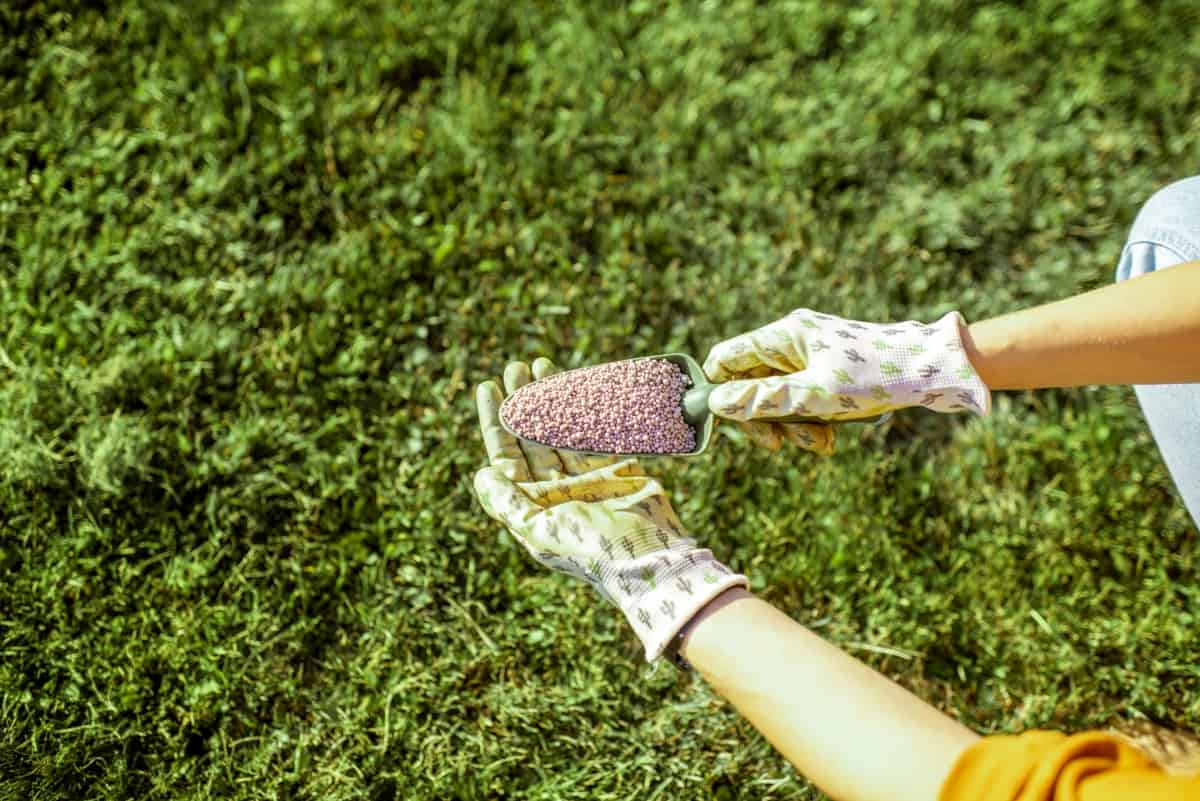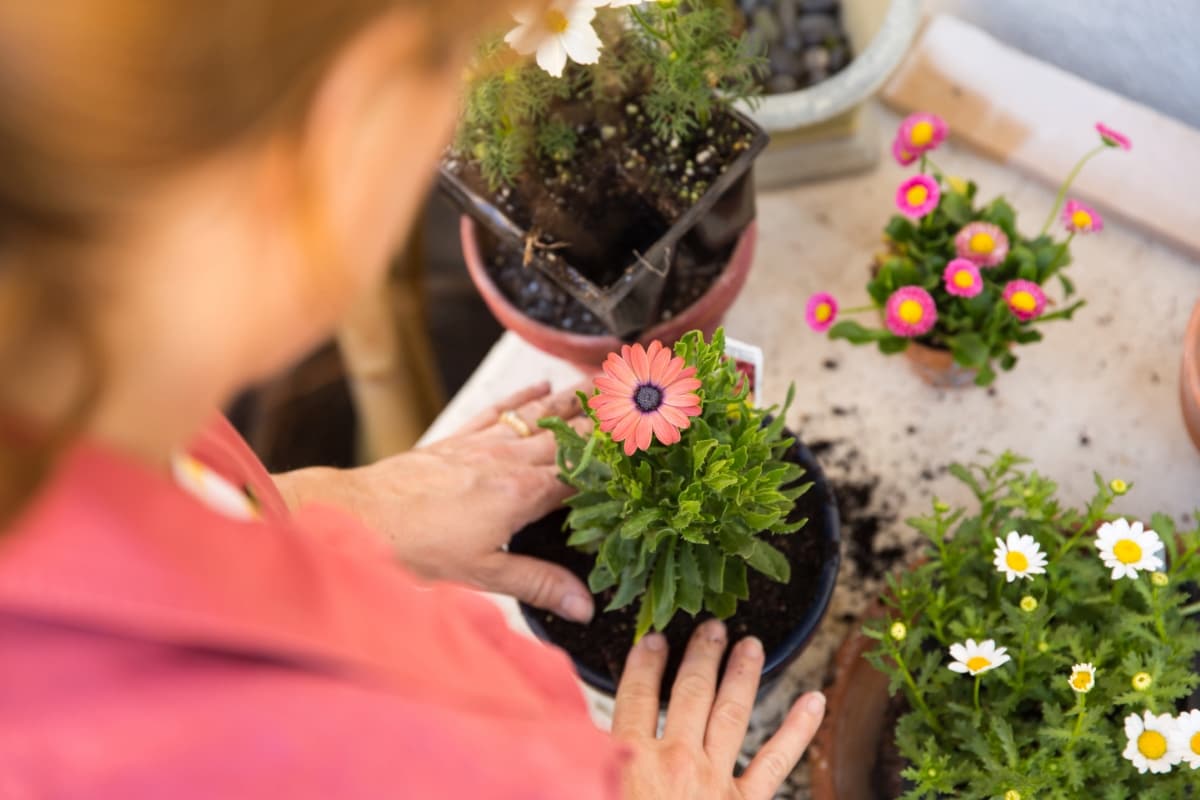As a dedicated or aspiring gardener, you may already know that plant nutrition is critical to maintaining vibrant, healthy plants. In the case of potted flower plants, nutrition becomes even more important as the contained environment limits the amount of naturally occurring nutrients available to the plants. A well-selected and correctly applied fertilizer can give your potted flower plants the necessary nutrients and enable them to thrive.

This article will discuss the best fertilizers for potted flower plants, both homemade and synthetic, their NPK ratios, and provide detailed guidance on when and how to apply them. Fertilizers, which can be granular or liquid, provide the necessary nutrients for plant growth. Granular fertilizers are solid particles that need to be spread around the plant and watered in, while liquid fertilizers are dissolved in water and applied to the plant’s root zone. Each has its advantages and usage, which we will discuss in detail.
Best Fertilizer for Potted Flower Plants
Granular Fertilizers for Potted Flower Plants
Granular fertilizers are an excellent choice for potted flower plants because they slowly release nutrients over time, providing a steady supply for your plants. To apply granular fertilizers to your potted plants, you must evenly distribute the granules over the soil’s surface. Once the granules are spread, you should water your plants thoroughly. This helps to dissolve the fertilizer, allowing it to penetrate the soil and reach the plant roots. It’s important to water carefully; too much water can wash away the granules before they’ve had a chance to dissolve fully.
Homemade Fertilizers for Potted Flower Plants
If you prefer a more natural approach, homemade fertilizers can be a great option for your potted flower plants. They are cost-effective, environmentally friendly, and just as effective as their synthetic counterparts. Two of the most popular homemade fertilizers are compost tea and eggshell tea. Compost tea is a nutrient-rich liquid made by steeping compost in water. This fertilizer offers a comprehensive array of essential nutrients and advantageous microorganisms, thereby promoting the enhancement of both soil quality and plant development.
To make compost tea, fill a bucket with compost, add water, and let it steep for a few days. Then, strain the liquid and apply it directly to your plants. Eggshell tea is another excellent homemade fertilizer. Eggshells are rich in calcium, which is vital for plant cell growth. To make eggshell tea, crush eggshells, add them to boiling water, and let it steep overnight. The next day, strain the liquid and apply it to your plants. Like compost tea, eggshell tea can be applied directly to your plants.
Synthetic Fertilizers for Potted Flower Plants
Synthetic fertilizers are an excellent option for gardeners who prefer a more controlled and precise nutrient delivery. They are designed to provide specific nutrients in exact proportions, known as NPK ratios. NPK stands for Nitrogen (N), Phosphorus (P), and Potassium (K), the three primary nutrients required for plant growth.
When choosing a synthetic fertilizer for your potted flower plants, the NPK ratio is essential. A high phosphorus content (the middle number in the NPK ratio) is desirable for flowering plants as it promotes blooming. For example, a fertilizer with an NPK ratio of 15-30-15 would suit most flowering plants.
One highly recommended synthetic fertilizer is Osmocote’s Smart-Release Plant Food, with an NPK ratio of 14-14-14. This balanced formula slowly releases nutrients over several months, reducing the need for frequent applications and minimizing the risk of over-fertilization. Another good option is Miracle-Gro’s Water Soluble Bloom Booster Flower Food, with an NPK ratio of 15-30-15. This high phosphorus formula is designed to promote abundant blooms.
In case you missed it: The Best Fertilizer for Frangipani/Plumeria: When and How to Apply

Applying Liquid Fertilizers to Potted Flower Plants
Liquid fertilizers offer a quick, readily available source of nutrients for your potted plants. They are especially beneficial during the active growing season when plants’ nutrient needs are highest. The right amount of liquid fertilizer varies based on the product and your plant’s requirements. A good guideline is to follow the manufacturer’s instructions, dilute the fertilizer accordingly, and apply it to the soil near your plants.
When applying liquid fertilizers, it’s important to water your plants first. This ensures that the fertilizer is evenly distributed throughout the soil and reduces the risk of root burn. After watering, apply the diluted fertilizer solution to the root zone of your plants. For healthy plants, use liquid fertilizers regularly every 2-4 weeks in the growing season. Use the correct fertilizer when it’s needed. Most potted flowers need fertilization at the start and middle of the season, but it can vary depending on the plant.
Understanding the Nutrient Requirements of Your Potted Flower Plants
Before embarking on a fertilization regimen, it is paramount to comprehend the specific nutrient needs of your potted flower plants. Different species have distinct nutrient requirements, and even within a species, needs may vary depending on the plant’s growth stage. Nitrogen, phosphorus, and potassium, collectively known as NPK, are the primary macronutrients necessary for plant growth.
Nitrogen aids leaf and stems growth, phosphorus supports root development and flower blooming, and potassium contributes to overall plant health and disease resistance. Other micronutrients like calcium, magnesium, sulfur, and trace elements like iron, manganese, zinc, copper, molybdenum, and boron, are also essential, albeit in much smaller quantities.
In case you missed it: The Best Fertilizer for Lotus: When and How to Apply

Once you’ve determined your plants’ specific nutrient needs, choose a fertilizer that provides these nutrients in the right proportions. For instance, a plant in the growth phase may require a high nitrogen fertilizer, while a plant in the blooming stage may benefit from a high phosphorus fertilizer. Always adhere to the manufacturer’s instructions on the fertilizer package to ensure you’re using the correct amounts.
Conclusion
In conclusion, maintaining the health and vibrancy of your potted flower plants requires careful attention to their nutritional needs. To help your plants grow well, choose the right fertilizer based on plant type, potting mix, and what you like. Learn about different fertilizers and how to use them properly to give your potted flowers the nutrients they require.
- Feed Your Flock for Less: Top 10 Tips to Save on Chicken Feed
- Ultimate Guide to Ossabaw Island Hog: Breeding, Raising, Diet, and Care
- Hatching Answers: The Top 10 Reasons Your Chickens Aren’t Laying Eggs
- Eggs and Economics: Breaking Down the Cost of Raising Backyard Chickens
- Defend Your Greens: Proven Methods to Keep Iguanas Out of Your Garden
- Ultimate Guide to Cinnamon Queen Chicken: A Comprehensive Guide for Beginners
- Ultimate Guide to California Tan Chicken: Breeding, Raising, Diet, Egg-Production and Care
- Ultimate Guide to Marsh Daisy Chicken: Breeding, Raising, Diet, and Care
- 10 Types of Chicken Farming Businesses You Can Start for Profits